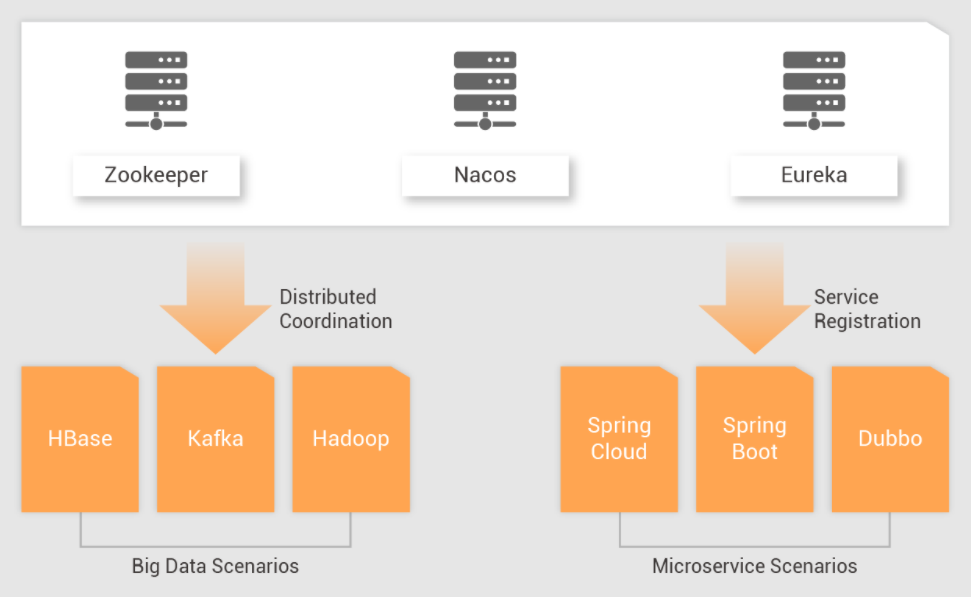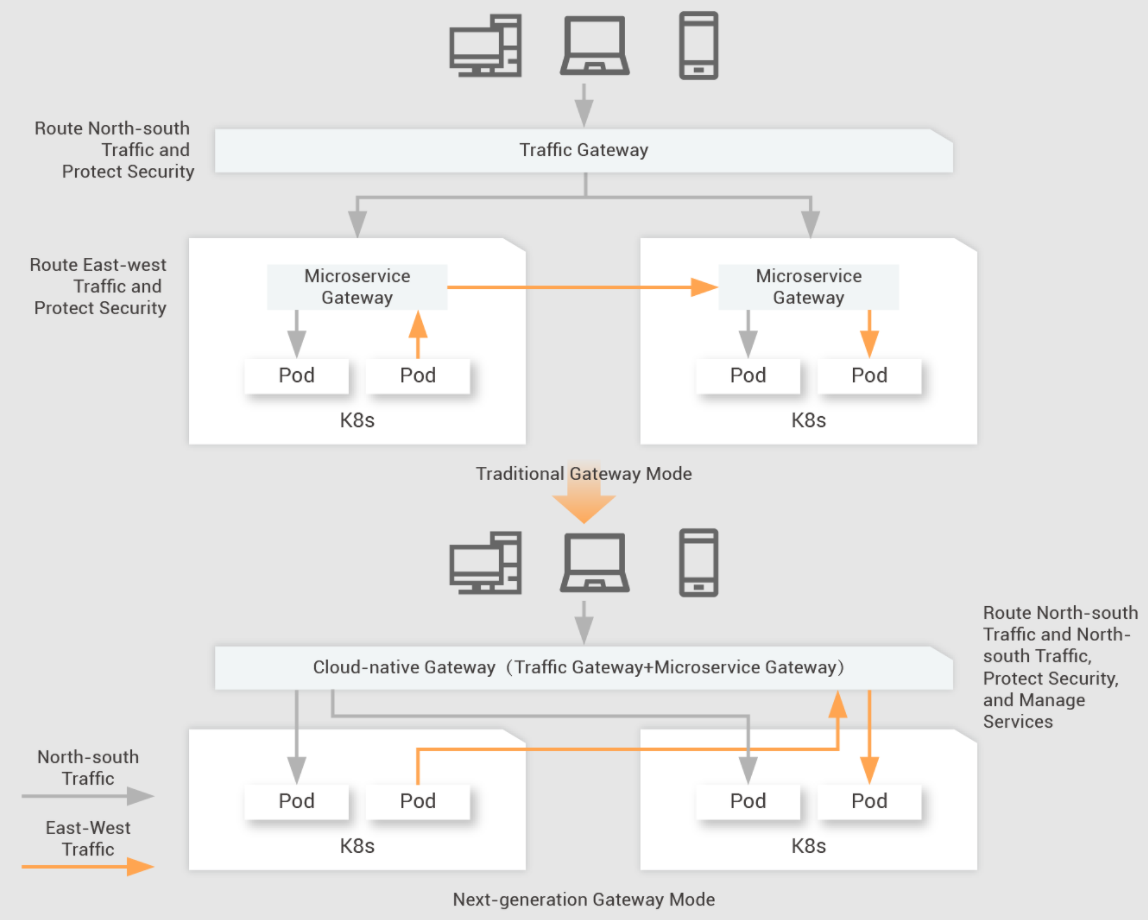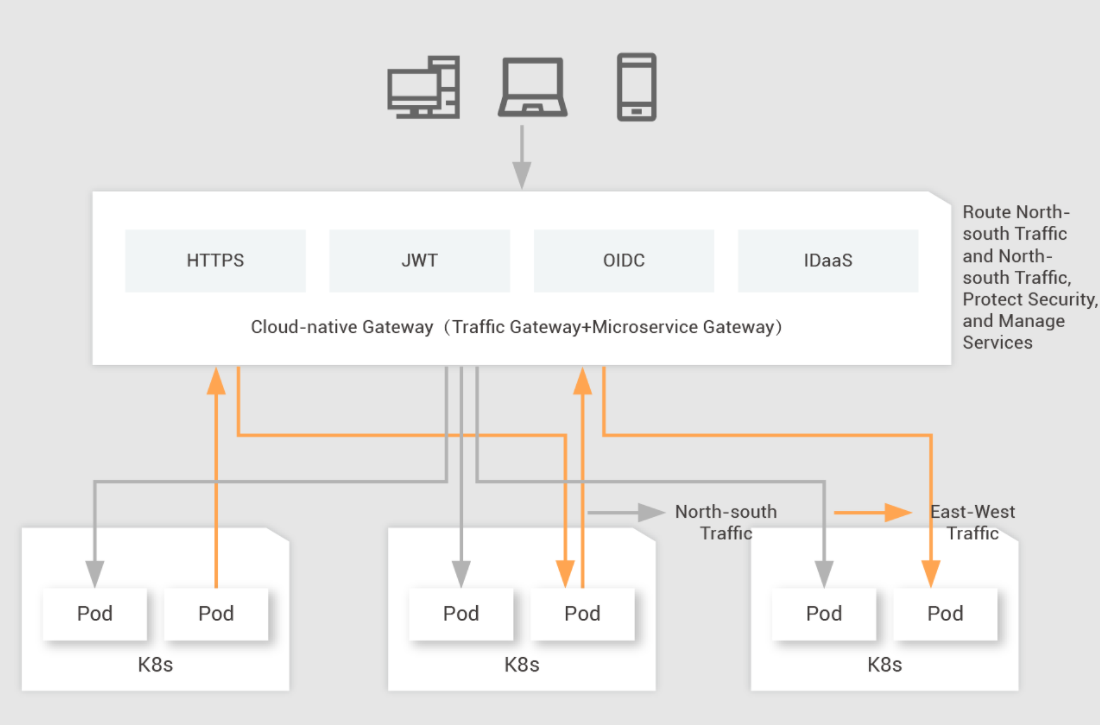Microservices Engine (MSE) is an O&M-free and highly available engine service. MSE provides three modules: Microservices Registry, Cloud-native Gateway, and Microservices Governance. Microservices Registry provides fully managed instances. Microservices Governance provides open source microservices governance capabilities, without requiring you to modify code and configurations. MSE can be used in the big data and microservices fields to help you accelerate business integration and reduce modification costs.
Support for microservice registration and distributed coordination
Microservices Registry provides features such as microservice registration and discovery, configuration management, and distributed data management. Microservices Registry supports three types of engines: Nacos, ZooKeeper, and Eureka engines. Microservices Registry is suitable for the following business scenarios:
Microservice registration and discovery
Microservice applications are increasingly used along with the rapid development of cloud computing. MSE provides an O&M-free, highly available, and stable registry for microservice applications that are developed based on the Spring Cloud or Dubbo framework.
Distributed scheduling (supported in non-microservices scenarios)
MSE ZooKeeper instances provide a wide range of features such as distributed locks and distributed queues. MSE ZooKeeper instances can provide a variety of distributed coordination solutions for self-managed distributed applications. These solutions help improve the high availability of the system and develop a distributed application system in a quick and efficient manner. If you use big data components such as Hadoop, HBase, Kafka, and Flink, MSE ZooKeeper instances are used to provide the high availability solution by default.
Recommended service integrations
Message Queue for Apache Kafka

Enhanced stability of microservice application releases and improved development efficiency
When you release a microservice application, you can use Microservices Governance provided by MSE. Microservices Governance delivers the following benefits for the releases of your applications without requiring you to modify code and configurations:
Elimination of risks during application releases
Microservices Governance provides features to completely eliminate the risks that may occur during application releases. The features include configuration management, graceful start and shutdown, and end-to-end canary release. For more information about these features, see Implement graceful start and shutdown of microservice applications by using MSE.
Elimination of occasional issues
Microservices Governance provides capabilities to effectively perform throttling, load balancing, fault isolation, and degradation when traffic surges or related services fail in some scenarios. The capabilities include throttling, degradation, circuit breaking, and isolation.
Low-cost microservice-based agile development
Microservices Governance allows you to logically isolate multiple development environments from each other, without generating extra costs for adding physical machines. This helps resolve environment preemption and conflict issues and implement agile development. For more information, see Implement microservice-based agile development.
Recommended service integrations
We recommend that you integrate MSE with Elastic Compute Service (ECS), ApsaraDB RDS, Object Storage Service (OSS), and Container Service for Kubernetes (ACK).
Integration of traffic gateways and microservices gateways to reduce resource consumption
Traffic gateways such as NIGNX gateways provide global policies that are irrelevant to backend business applications. The global policies include the policies that are related to HTTPS certificate offloading, web application firewalls, and global traffic monitoring. Microservices gateways such as Spring Cloud Gateway provide policies that are tightly coupled with your business. Each policy is specific to a business field such as microservices governance or identity authentication. Cloud-native gateways of MSE integrate traffic gateways with microservices gateways. This integration reduces resource consumption by half and allows you to use and maintain gateways at a lower cost.
In traditional gateway mode, traffic gateways are used to schedule north-south traffic and provide security protection, and microservices gateways are used to schedule east-west traffic and implement microservices governance. In next-generation gateway mode, cloud-native gateways are used to schedule both east-west traffic and north-south traffic, provide security protection, and implement microservices governance. The following figure shows the deployment architecture in traditional gateway mode and the deployment architecture in next-generation gateway mode.

Various authentication capabilities to reduce secure access costs
Authentication is an essential feature of gateways. Cloud-native gateways of MSE provide JSON Web Token (JWT) authentication and OpenID Connect (OIDC) authentication based on OAuth 2.0. Cloud-native gateways also support Alibaba Cloud Identity as a Service (IDaaS) authentication. IDaaS authentication helps you implement third-party sign-up. Third parties include Alipay, Taobao, and Tmall. Cloud-native gateways extend authentication capabilities by using plug-ins. This helps you reduce secure access costs.
Cloud-native gateways are used to schedule both east-west traffic and north-south traffic, provide security protection, and implement microservices governance. The following figure shows how a cloud-native gateway implements the authentication feature.
